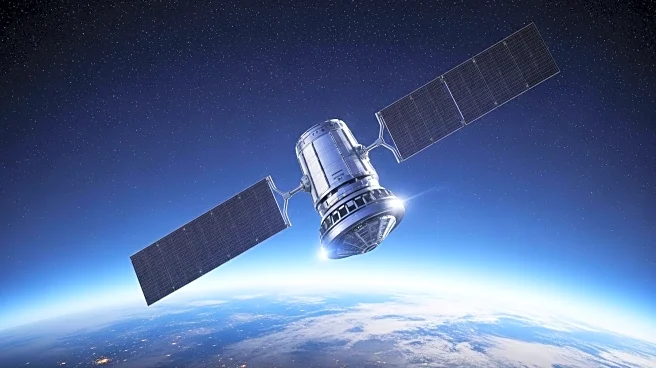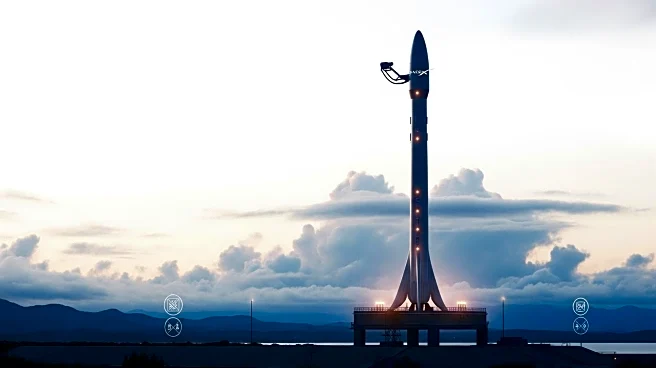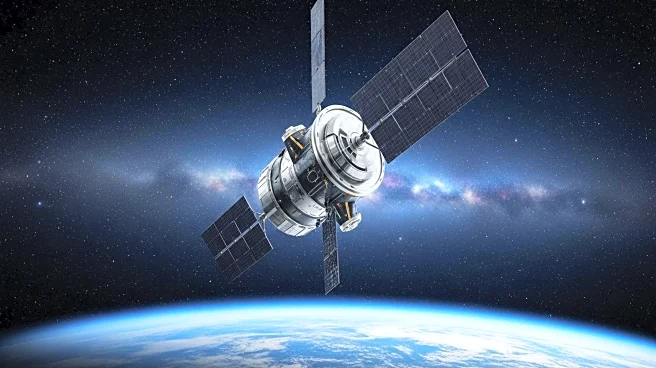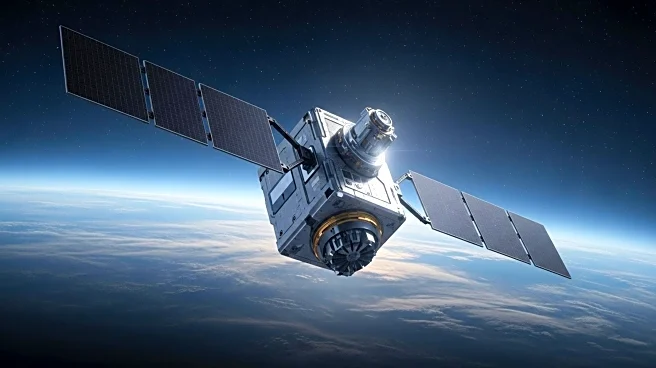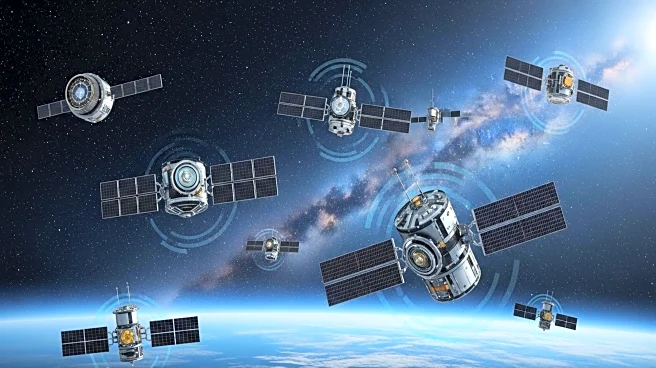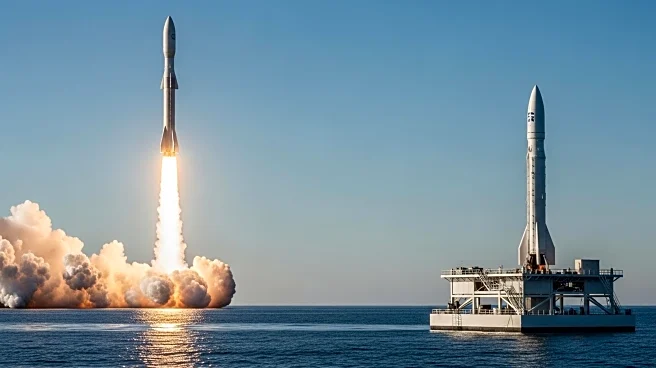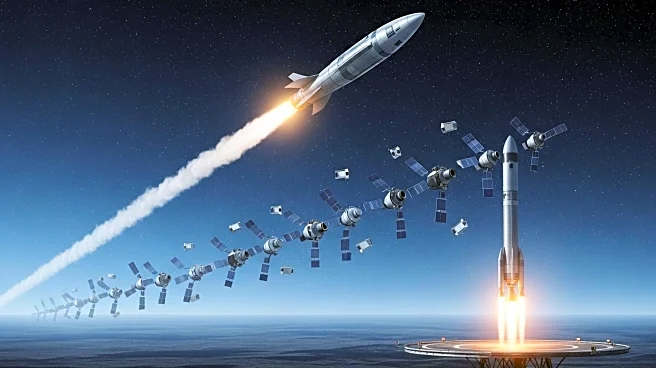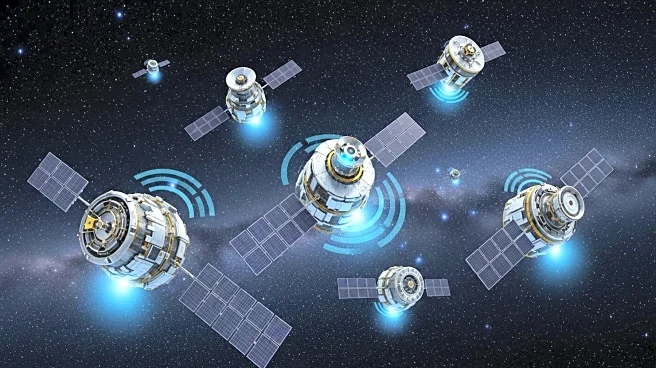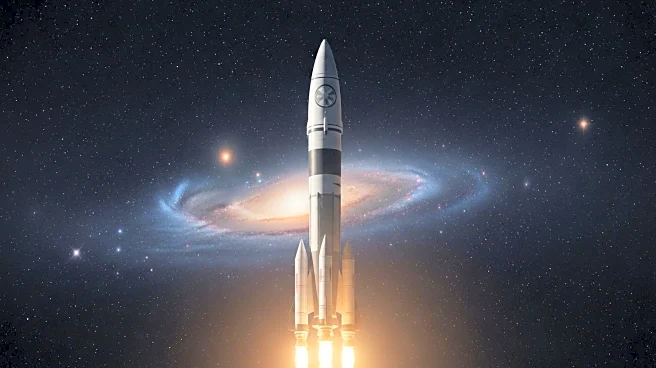What's Happening?
SpaceX successfully launched a Falcon 9 rocket carrying 28 Starlink satellites from Vandenberg Space Force Base in California on September 28, 2025. The launch occurred at 10:04 p.m. EDT and marked the 124th Falcon 9 mission of the year. The rocket's first stage, Booster 1063, completed its 28th flight and landed on the droneship 'Of Course I Still Love You' in the Pacific Ocean. This mission added to SpaceX's growing Starlink megaconstellation, which now comprises over 8,500 active satellites. The deployment of these satellites aims to enhance global broadband internet coverage.
Why It's Important?
The expansion of the Starlink satellite network is significant for global internet connectivity, particularly in remote and underserved areas. By increasing the number of satellites in orbit, SpaceX aims to provide faster and more reliable internet services worldwide. This development could disrupt traditional internet service providers by offering an alternative that does not rely on ground-based infrastructure. Additionally, the successful reuse of the Falcon 9's first stage highlights SpaceX's advancements in cost-effective space travel, potentially lowering the barrier for future space missions.
What's Next?
SpaceX plans to continue its aggressive launch schedule to further expand the Starlink constellation. As more satellites are deployed, the company will likely focus on improving service quality and expanding coverage areas. Regulatory challenges and competition from other satellite internet providers may influence future developments. Stakeholders, including governments and telecommunications companies, will be closely monitoring the impact of Starlink on the global internet market.

